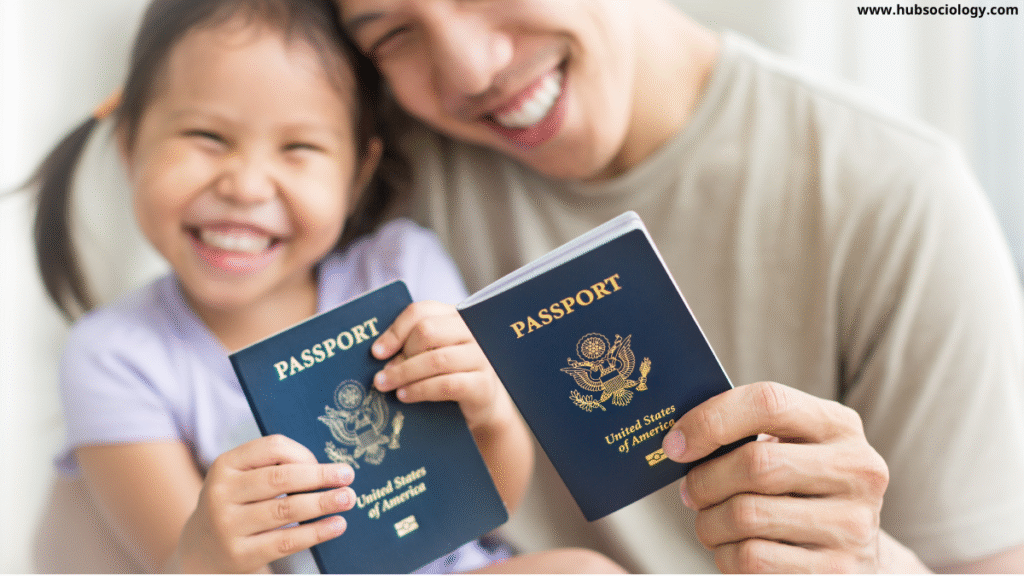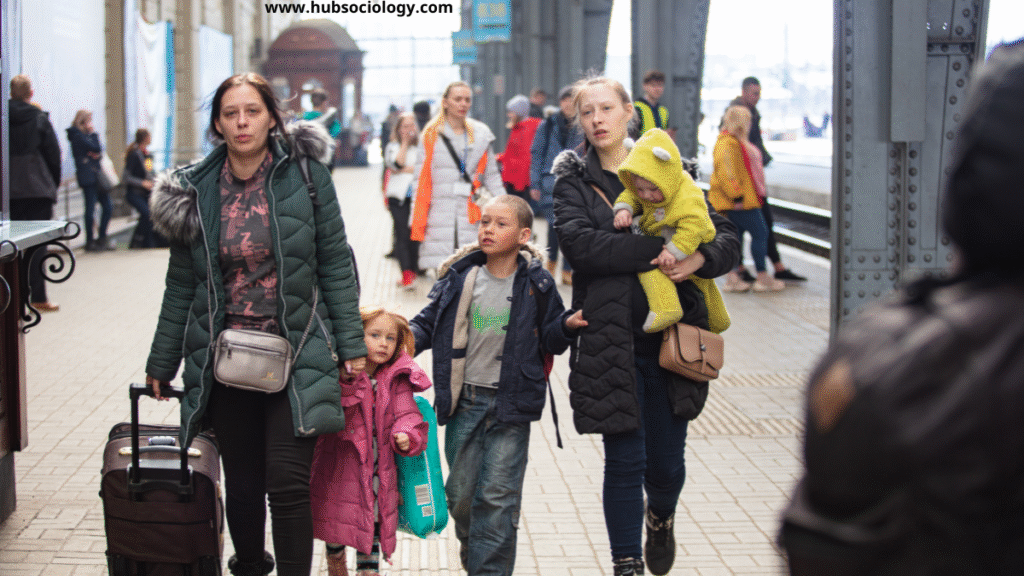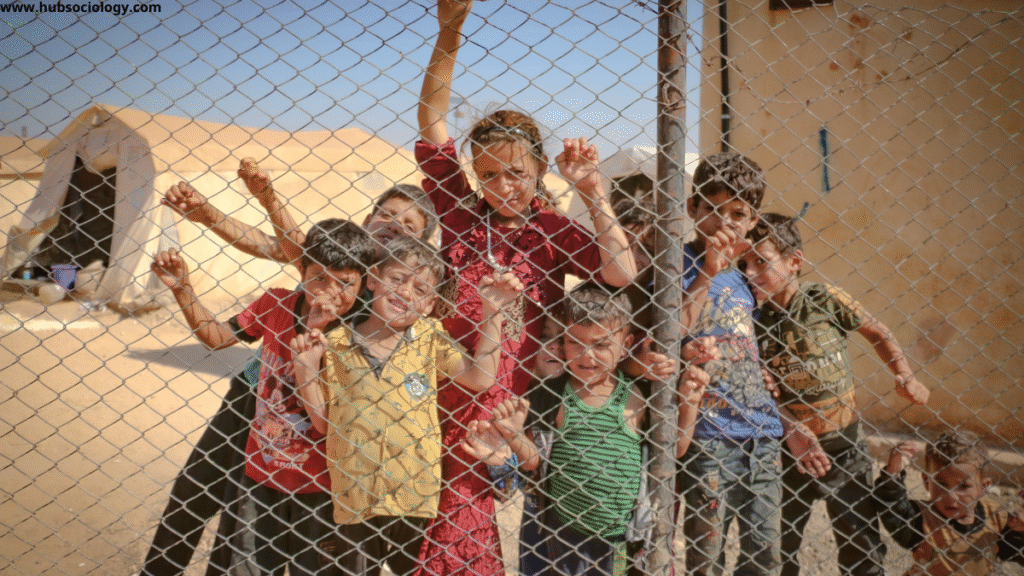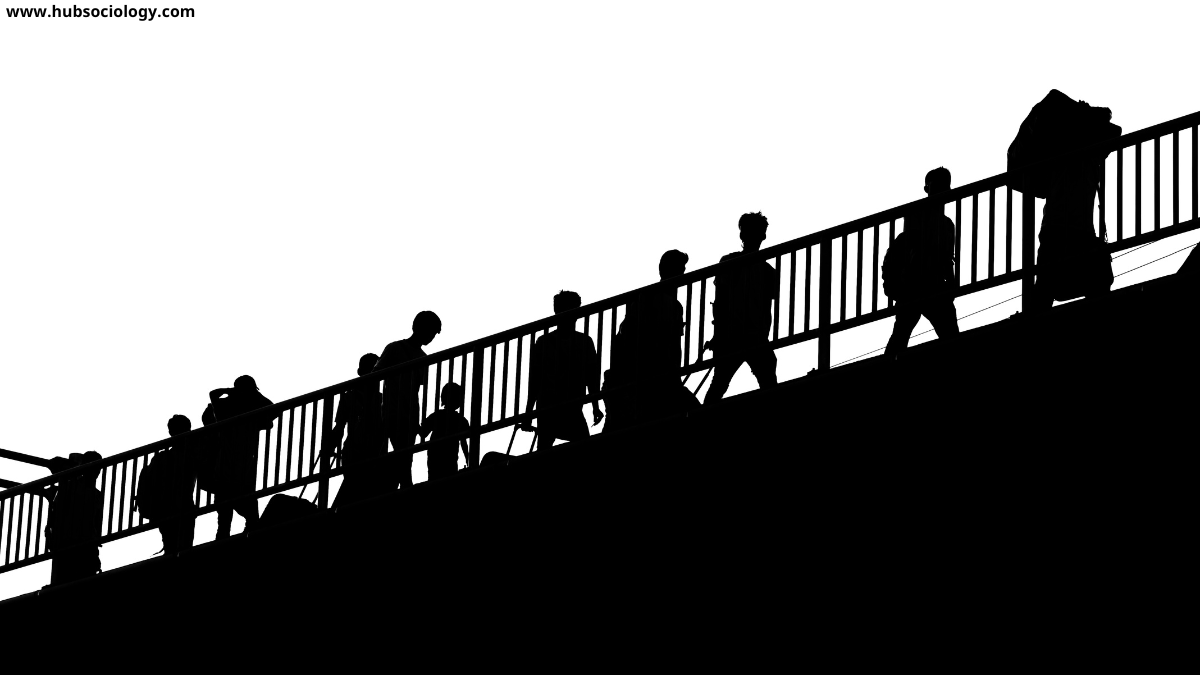Introduction on Migration Theories and Their Application in Asia
Migration is a complex social phenomenon that has shaped human societies throughout history. In Asia, migration patterns are influenced by economic, political, cultural, and environmental factors. Sociological theories of migration provide frameworks for understanding why people move, how migration affects societies, and the implications for both sending and receiving communities. This article explores key migration theories—such as push-pull theory, neoclassical economics, world systems theory, transnationalism, and social network theory—and examines their application in the Asian context. By analyzing these theories, we can better understand the dynamics of migration in one of the world’s most populous and diverse regions.

Table of Contents
1. Push-Pull Theory and Economic Migration in Asia
Theoretical Overview
The push-pull theory, developed by Everett Lee (1966), suggests that migration is driven by factors that push people out of their origin countries (e.g., poverty, conflict, unemployment) and pull them toward destination countries (e.g., job opportunities, political stability, higher wages). This theory is widely used to explain labor migration in Asia.
Application in Asia
Asia is home to some of the largest labor migrations in the world. Countries like the Philippines, India, Bangladesh, and Indonesia are major sources of migrant workers, while Gulf countries (Saudi Arabia, UAE), Singapore, Malaysia, and South Korea are key destinations.
- Push Factors:
- Poverty and Unemployment: Many Asian workers migrate due to limited economic opportunities in their home countries. For example, millions of Bangladeshis work in the Middle East due to low wages and job scarcity at home.
- Political Instability: Conflict and persecution push people to flee, as seen in the Rohingya crisis, where refugees migrated from Myanmar to Bangladesh and Malaysia.
- Pull Factors:
- Economic Opportunities: Countries like Singapore and South Korea attract skilled and unskilled workers due to higher wages and better working conditions.
- Demand for Labor: The construction boom in the Gulf relies heavily on South and Southeast Asian laborers.
Critique of Push-Pull Theory
While useful, this theory oversimplifies migration by ignoring structural barriers (e.g., immigration policies) and migrants’ agency. It also does not account for forced migration due to climate change or war.
2. Neoclassical Economics and Skilled Migration in Asia
Theoretical Overview
Neoclassical economic theory views migration as an individual decision to maximize income. Workers move from low-wage to high-wage economies, leading to equilibrium in labor markets.
Application in Asia
Asia experiences significant brain drain (skilled workers leaving) and brain gain (skilled workers returning or contributing remittances).
- Brain Drain:
- India and the Philippines lose many doctors, engineers, and IT professionals to Western countries.
- China sees an outflow of students who study abroad and often settle overseas.
- Brain Circulation:
- Some Asian economies, like Taiwan and South Korea, benefit from returnees who bring back skills and capital.
- India’s IT sector has grown due to diaspora investments and knowledge transfer.
Limitations
This theory assumes rational decision-making but ignores non-economic factors like family ties and cultural preferences.
3. World Systems Theory and Unequal Migration Flows
Theoretical Overview
Immanuel Wallerstein’s world systems theory argues that global capitalism creates core (developed), periphery (underdeveloped), and semi-periphery countries. Migration flows reflect these inequalities, with labor moving from periphery to core nations.

Application in Asia
- Core-Periphery Dynamics:
- Wealthy Asian countries (Japan, South Korea, Singapore) attract migrants from poorer nations (Nepal, Cambodia, Indonesia).
- The Gulf states exploit low-wage South Asian labor for infrastructure projects.
- Dependency and Exploitation:
- Many Asian migrants face poor working conditions, wage theft, and lack of legal protections (e.g., Nepali workers in Qatar’s World Cup construction).
- Women from the Philippines and Indonesia often work as domestic helpers in the Middle East, facing abuse and restricted mobility.
Critique
This theory highlights structural inequalities but underemphasizes migrants’ resilience and agency in navigating these systems.
4. Transnationalism and Diaspora Communities in Asia
Theoretical Overview
Transnationalism (Glick Schiller et al., 1992) examines how migrants maintain ties across borders, forming hybrid identities and economic networks.
Application in Asia
- Diaspora Economies:
- The Chinese diaspora (e.g., in Southeast Asia) plays a key role in trade and investment.
- Indian and Filipino migrants send billions in remittances, boosting home economies.
- Cultural Transnationalism:
- Bollywood and K-pop influence global culture through diasporic communities.
- Religious networks (e.g., Islamic, Hindu, Buddhist groups) connect migrants to their homelands.
Challenges
While transnationalism fosters connectivity, it can also lead to identity conflicts and dual loyalties.
5. Social Network Theory and Chain Migration in Asia
Theoretical Overview
Social network theory (Massey et al., 1993) argues that migration is facilitated by interpersonal connections. Chain migration occurs when pioneers help others follow.
Application in Asia
- Ethnic Enclaves:
- Little India in Singapore, Koreatowns in the U.S., and Filipino communities in the Middle East emerge from chain migration.
- Nepali Gurkhas in the British Army recruit from specific villages.
- Recruitment Networks:
- Labor agencies in South Asia facilitate migration but sometimes engage in exploitation.
- Family-based migration is common in South Korea (marriage migrants) and Japan (Nikkeijin—descendants of Japanese emigrants).
Limitations
Networks can reinforce segregation and limit integration into host societies.
6. Gender and Migration in Asia
Theoretical Insights
Feminist migration theories highlight how gender shapes migration experiences. Women often migrate as caregivers or domestic workers, facing unique vulnerabilities.
Application in Asia
- Feminization of Migration:
- Filipina and Indonesian domestic workers constitute a large share of Gulf and East Asian labor markets.
- “Mail-order brides” from Southeast Asia migrate to East Asia (e.g., Vietnamese brides in Taiwan).
- Exploitation and Resistance:
- Many female migrants face abuse but also form support groups (e.g., migrant worker unions in Hong Kong).
Conclusion on Migration Theories and Their Application in Asia
Migration in Asia is a multifaceted phenomenon shaped by economic disparities, global capitalism, social networks, and gender dynamics. While push-pull and neoclassical theories explain labor flows, world systems theory highlights structural inequalities. Transnationalism and social network theories reveal how migrants sustain cross-border ties. Applying these theories helps policymakers address challenges like exploitation, brain drain, and integration. Future research should explore climate-induced migration and digital nomadism as emerging trends in Asia.

Understanding migration through a sociological lens allows for more humane and effective policies that protect migrants while harnessing their contributions to development.
Do you like this this Article on Migration Theories ? You Can follow as on :-
Facebook – https://www.facebook.com/hubsociology
Whatsapp Channel – https://whatsapp.com/channel/0029Vb6D8vGKWEKpJpu5QP0O
Gmail – hubsociology@gmail.com
Topic Related Questions on Migration Theories
5-Mark Questions on Migration Theories (Short Answer)
- Define push-pull theory and give one example of its application in Asia.
- How does neoclassical economic theory explain skilled migration in Asia?
- What is brain drain, and how does it affect countries like India and the Philippines?
- Briefly explain world systems theory in the context of labor migration to the Gulf states.
- What role do social networks play in chain migration within Asia?
- How does gender influence migration patterns in Asia? Provide one example.
- What are remittances, and why are they significant for Asian economies?
- Name one limitation of the push-pull theory in explaining Asian migration.
- How does transnationalism differ from traditional migration theories?
- What are ethnic enclaves, and how do they form in migrant-receiving countries?
10-Mark Questions on Migration Theories (Detailed Answer)
- Explain the push-pull theory of migration and discuss its strengths and weaknesses in analyzing labor migration in Asia.
- How does world systems theory help us understand the exploitation of South Asian workers in the Gulf? Provide examples.
- Discuss the concept of brain drain in Asia. What are its economic and social impacts on sending countries?
- Analyze how social network theory explains the formation of diaspora communities in Asia (e.g., Little India, Koreatowns).
- What is transnationalism? How do Asian migrants maintain cultural and economic ties with their home countries?
- Examine the feminization of migration in Asia. Why are women more vulnerable in transnational labor markets?
- Compare neoclassical economics and world systems theory in explaining migration flows within Asia.
- How do remittances shape the economies of labor-exporting countries like Bangladesh and the Philippines?
- Discuss the role of recruitment agencies in facilitating (or exploiting) Asian migrant workers.
- What are the key differences between forced migration and voluntary economic migration in Asia? Provide examples.
15-Mark Questions on Migration Theories (Essay/Comprehensive Answer)
- Critically evaluate the applicability of migration theories (push-pull, neoclassical economics, world systems theory) in explaining contemporary migration trends in Asia.
- “Asian migration is shaped by both global capitalism and local socio-cultural factors.” Discuss this statement using relevant sociological theories and examples.
- How does gender influence migration patterns in Asia? Analyze the experiences of female domestic workers in the Gulf and East Asia.
- Examine the role of diaspora communities in the economic and cultural development of their home countries (e.g., Indian, Chinese, Filipino diasporas).
- Discuss the challenges faced by Asian migrant workers in host countries. How do legal, economic, and social factors contribute to their vulnerability?
- “Transnationalism has redefined the traditional concept of migration.” Discuss this statement with reference to Asian migrant communities.
- How does climate change act as a push factor for migration in Asia? Compare it with economic migration using case studies.
- Analyze the impact of remittances on the development of labor-exporting countries in South and Southeast Asia.
- “Social networks are both a support system and a constraint for migrants.” Discuss with examples from Asian migration flows.
- How do government policies in both sending and receiving countries shape migration trends in Asia? Provide case studies (e.g., Philippines’ labor export policy, Singapore’s foreign worker regulations).

1 thought on “Migration Theories and Their Application in Asia: A Sociological Perspective”